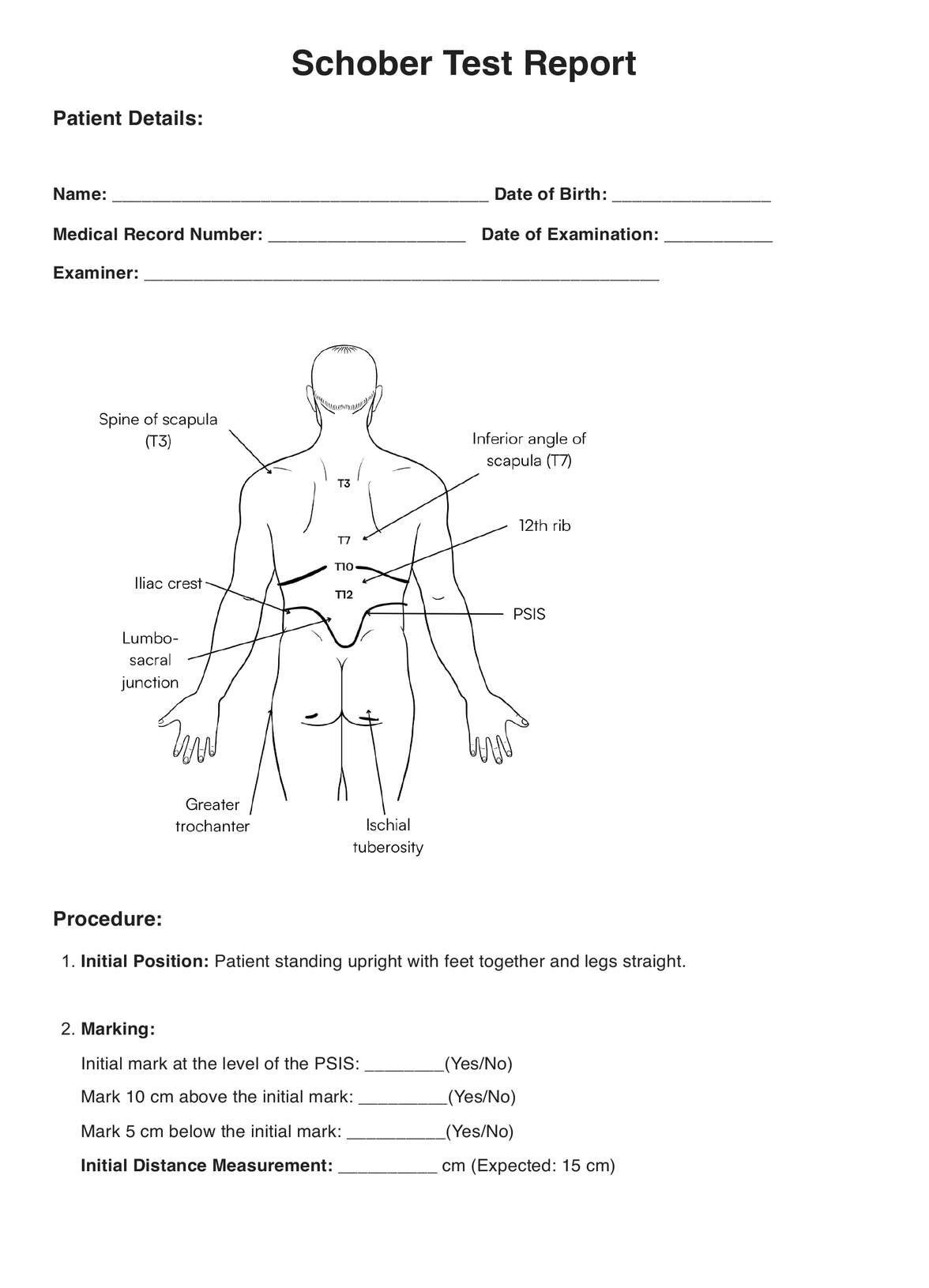Physiotherapists, orthopedic surgeons, rheumatologists, and other healthcare professionals who need to assess spinal mobility often use Schober Tests.

Schober Tests
Discover Carepatron, a trusted Schober Test app used globally. Streamline your patient assessments with our user-friendly interface and advanced features.
Schober Tests Template
Commonly asked questions
Schober Tests are used when a patient presents with symptoms of decreased spinal mobility, such as lower back pain or stiffness. They are often used in diagnosing conditions like ankylosing spondylitis.
Schober Tests are performed by marking two points on the patient's lower back, measuring the distance between them as the patient bends forward, and comparing this to the initial measurement. The results are then documented in the patient's medical record.
EHR and practice management software
Get started for free
*No credit card required
Free
$0/usd
Unlimited clients
Telehealth
1GB of storage
Client portal text
Automated billing and online payments











